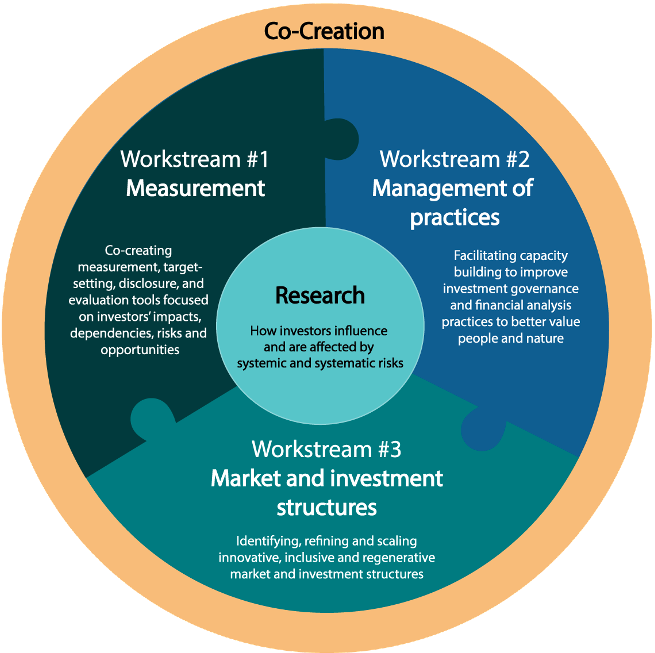The Predistribution Initiative (PDI) is a nonpartisan, multistakeholder non-profit that works with investors and their stakeholders to improve financial analysis and investment decision-making processes in ways that more adequately value workers, communities and nature.
Sign up for PDI’s newsletter to stay up-to-date, and read more about our work below.
Efforts to date to make investment more responsible have primarily focused on portfolio companies, including their operations, products and services. However, little has been developed to assess and improve investors’ own activities, particularly regarding the allocation, pricing and structuring of capital. This gap means that risks to society and nature are not addressed systematically and effectively.
Predistribution is an approach to addressing socioeconomic inequality and conservation that prevents risks to people and nature before they occur, as opposed to having to remedy problems after the fact. Predistribution offers a pathway to resilience, agency and less dependency on redistribution.
The pathway to advance a predistributive economy is through market reform, with input from workers and communities across the political spectrum. We hope you will join us!
How We Do This
We specifically focus on three overlapping and complementary workstreams, each involving research and co-creation with diverse stakeholders – including investors, workers, communities, policy makers and regulators, and academics.

“Reimagining Investment Structures”
“Reimagining Investment Structures” is a series of animated videos about the need to improve investment structures so that investors can align their internal investment governance and financial analysis practices with the principles of intergenerational fiduciary duty. Part one focuses on the issue of inequality and how workers have lost economic power due to the “labor squeeze.” Part two focuses on risks relating to existing investment structures, such as leveraged buyout strategies used by some private equity firms. Part three looks at the role that investors can play in building a better financial system by taking into account issues like fund manager compensation, financial engineering, and tax structures.



